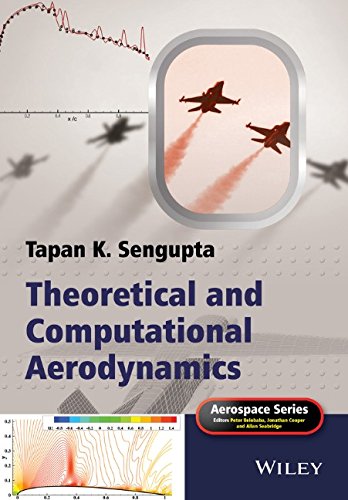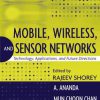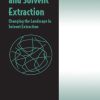(EBOOK PDF)Theoretical and Computational Aerodynamics 1st Edition by Tapan Sengupta 9781118787571 1118787579 full chapters
$50.00 Original price was: $50.00.$35.00Current price is: $35.00.
Theoretical and Computational Aerodynamics 1st Edition by Tapan Sengupta – Ebook PDF Instant Download/Delivery: 9781118787571, 1118787579
Full download Theoretical and Computational Aerodynamics 1st Edition after payment
Product details:
• ISBN 10:1118787579
• ISBN 13:9781118787571
• Author:Tapan Sengupta
Theoretical and Computational Aerodynamics
Aerodynamics has seen many developments due to the growth of scientific computing, which has caused the design cycle time of aerospace vehicles to be heavily reduced. Today computational aerodynamics appears in the preliminary step of a new design, relegating costly, time-consuming wind tunnel testing to the final stages of design.
Theoretical and Computational Aerodynamics is aimed to be a comprehensive textbook, covering classical aerodynamic theories and recent applications made possible by computational aerodynamics. It starts with a discussion on lift and drag from an overall dynamical approach, and after stating the governing Navier-Stokes equation, covers potential flows and panel method. Low aspect ratio and delta wings (including vortex breakdown) are also discussed in detail, and after introducing boundary layer theory, computational aerodynamics is covered for DNS and LES. Other topics covered are on flow transition to analyse NLF airfoils, bypass transition, streamwise and cross-flow instability over swept wings, viscous transonic flow over airfoils, low Reynolds number aerodynamics, high lift devices and flow control.
Key features:
Blends classical theories of incompressible aerodynamics to panel methods
Covers lifting surface theories and low aspect ratio wing and wing-body aerodynamics
Presents computational aerodynamics from first principles for incompressible and compressible flows
Covers unsteady and low Reynolds number aerodynamics
Includes an up-to-date account of DNS of airfoil aerodynamics including flow transition for NLF airfoils
Contains chapter problems and illustrative examples
Accompanied by a website hosting problems and a solution manual
Theoretical and Computational Aerodynamics is an ideal textbook for undergraduate and graduate students, and is also aimed to be a useful resource book on aerodynamics for researchers and practitioners in the research labs and the industry.
Theoretical and Computational Aerodynamics 1st Table of contents:
Chapter 1: Introduction to Aerodynamics and Atmosphere
1.1 Motivation and Scope of Aerodynamics
1.2 Conservation Principles
1.3 Origin of Aerodynamic Forces
1.4 Flow in Accelerating Control Volumes: Application of RTT
1.5 Atmosphere and Its Role in Aerodynamics
1.6 Static Stability of Atmosphere
Bibliography
Chapter 2: Basic Equations of Motion
2.1 Introduction
2.2 Conservation Principles
2.3 Conservation of Linear Momentum: Integral Form
2.4 Conservation of Linear Momentum: Differential Form
2.5 Strain Rate of Fluid Element in Flows
2.6 Relation between Stress and Rate of Strain Tensors in Fluid Flow
2.7 Circulation and Rotationality in Flows
2.8 Irrotational Flows and Velocity Potential
2.9 Stream Function and Vector Potential
2.10 Governing Equation for Irrotational Flows
2.11 Kelvin’s Theorem and Irrotationality
2.12 Bernoulli’s Equation: Relation of Pressure and Velocity
2.13 Applications of Bernoulli’s Equation: Air Speed Indicator
2.14 Viscous Effects and Boundary Layers
2.15 Thermodynamics and Reynolds Transport Theorem
2.16 Reynolds Transport Theorem
2.17 The Energy Equation
2.18 Energy Conservation Equation
2.19 Alternate Forms of Energy Equation
2.20 The Energy Equation in Conservation Form
2.21 Strong Conservation and Weak Conservation Forms
2.22 Second Law of Thermodynamics and Entropy
2.23 Propagation of Sound and Mach Number
2.24 One-Dimensional Steady Flow
2.25 Normal Shock Relation for Steady Flow
2.26 Rankine–Hugoniot Relation
2.27 Prandtl or Meyer Relation
2.28 Oblique Shock Waves
2.29 Weak Oblique Shock
2.30 Expansion of Supersonic Flows
Bibliography
Chapter 3: Theoretical Aerodynamics of Potential Flows
3.1 Introduction
3.2 Preliminaries of Complex Analysis for 2D Irrotational Flows: Cauchy–Riemann Relations
3.3 Elementary Singularities in Fluid Flows
3.4 Blasius’ Theorem: Forces and Moment for Potential Flows
3.5 Method of Images
3.6 Conformal Mapping: Use of Cauchy–Riemann Relation
3.7 Lift Created by Jukowski Airfoil
3.8 Thin Airfoil Theory
3.9 General Thin Airfoil Theory
3.10 Theodorsen Condition for General Thin Airfoil Theory
Bibliography
Chapter 4: Finite Wing Theory
4.1 Introduction
4.2 Fundamental Laws of Vortex Motion
4.3 Helmholtz’s Theorems of Vortex Motion
4.4 The Bound Vortex Element
4.5 Starting Vortex Element
4.6 Trailing Vortex Element
4.7 Horse Shoe Vortex
4.8 The Biot-Savart Law
4.9 Theory for a Finite Wing
4.10 Consequence of Downwash: Induced Drag
4.11 Simple Symmetric Loading: Elliptic Distribution
4.12 General Loading on a Wing
4.13 Asymmetric Loading: Rolling and Yawing Moment
4.14 Simplified Horse Shoe Vortex
4.15 Applications of Simplified Horse Shoe Vortex System
4.16 Prandtl’s Lifting Line Equation or the Monoplane Equation
Bibliography
Chapter 5: Panel Methods
5.1 Introduction
5.2 Line Source Distribution
5.3 Panel Method due to Hess and Smith
5.4 Some Typical Results
Bibliography
Chapter 6: Lifting Surface, Slender Wing and Low Aspect Ratio Wing Theories
6.1 Introduction
6.2 Green’s Theorems and Their Applications to Potential Flows
6.3 Irrotational External Flow Field due to a Lifting Surface
6.4 Slender Wing Theory
6.5 Spanwise Loading
6.6 Lift on Delta or Triangular Wing
6.7 Vortex Breakdown
6.8 Slender Body Theory
Bibliography
Chapter 7: Boundary Layer Theory
7.1 Introduction
7.2 Regular and Singular Perturbation Problems in Fluid Flows
7.3 Boundary Layer Equations
7.4 Boundary Layer Thicknesses
7.5 Momentum Integral Equation
7.6 Validity of Boundary Layer Equation and Separation
7.7 Solution of Boundary Layer Equation
7.8 Similarity Analysis
7.9 Use of Boundary Layer Equation in Aerodynamics
Bibliography
Chapter 8: Computational Aerodynamics
8.1 Introduction
8.2 A Model Dynamical Equation
8.3 Space–Time Resolution of Flows
8.4 An Improved Orthogonal Grid Generation Method for Aerofoil
8.5 Orthogonal Grid Generation
8.6 Orthogonal Grid Generation for an Aerofoil with Roughness Elements
8.7 Solution of Navier–Stokes Equation for Flow Past AG24 Aerofoil
Bibliography
Chapter 9: Instability and Transition in Aerodynamics
9.1 Introduction
9.2 Temporal and Spatial Instability
9.3 Parallel Flow Approximation and Inviscid Instability Theorems
9.4 Viscous Instability of Parallel Flows
9.5 Instability Analysis from the Solution of the Orr–Sommerfeld Equation
9.6 Transition in Three-Dimensional Flows
9.7 Infinite Swept Wing Flow
9.8 Attachment Line Flow
9.9 Boundary Layer Equations in the Transformed Plane
9.10 Simplification of Boundary Layer Equations in the Transformed Plane
9.11 Instability of Three-Dimensional Flows
9.12 Linear Viscous Stability Theory for Three-Dimensional Flows
9.13 Experimental Evidence of Instability on Swept Wings
9.14 Infinite Swept Wing Boundary Layer
9.15 Stability of the Falkner–Skan–Cooke Profile
9.16 Stationary Waves over Swept Geometries
9.17 Empirical Transition Prediction Method for Three-Dimensional Flows
Bibliography
Chapter 10: Drag Reduction: Analysis and Design of Airfoils
10.1 Introduction
10.2 Laminar Flow Airfoils
10.3 Pressure Recovery of Some Low Drag Airfoils
10.4 Flap Operation of Airfoils for NLF
10.5 Effects of Roughness and Fixing Transition
10.6 Effects of Vortex Generator or Boundary Layer Re-Energizer
10.7 Section Characteristics of Various Profiles
10.8 A High Speed NLF Aerofoil
10.9 Direct Simulation of Bypass Transitional Flow Past an Airfoil
Bibliography
Chapter 11: Direct Numerical Simulation of 2D Transonic Flows around Airfoils
11.1 Introduction
11.2 Governing Equations and Boundary Conditions
11.3 Numerical Procedure
11.4 Some Typical Results
Bibliography
Chapter 12: Low Reynolds Number Aerodynamics
12.1 Introduction
12.2 Micro-air Vehicle Aerodynamics
12.3 Governing Equations in Inertial and Noninertial Frames
12.4 Flow Past an AG24 Airfoil at Low Reynolds Numbers
Bibliography
Chapter 13: High Lift Devices and Flow Control
13.1 Introduction
13.2 Passive Devices: Multi-Element Airfoils with Slats and Flaps
13.3 Flow Control by Plasma Actuation: High Lift Device and Drag Reduction
13.4 Governing Equations for Plasma
13.5 Governing Fluid Dynamic Equations
13.6 Results and Discussions
Bibliography
Index
End User License Agreement
People also search for Theoretical and Computational Aerodynamics 1st:
theoretical and computational aerodynamics
an introduction to theoretical and computational aerodynamics
an introduction to theoretical and computational aerodynamics jack moran
theoretical and computational aerodynamics pdf
theoretical computer science jobs
Tags:
Theoretical and Computational,Computational Aerodynamics,Tapan Sengupta




